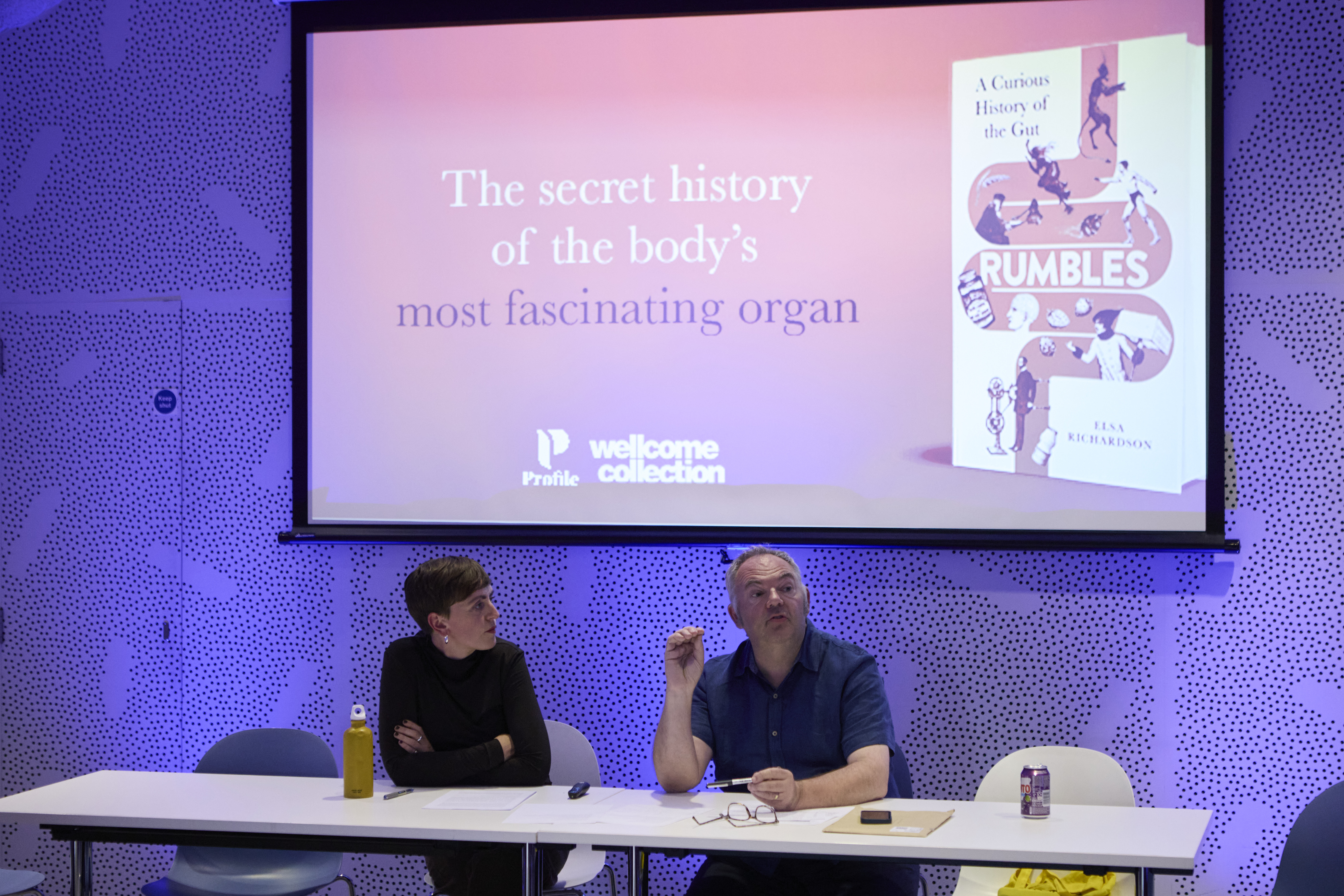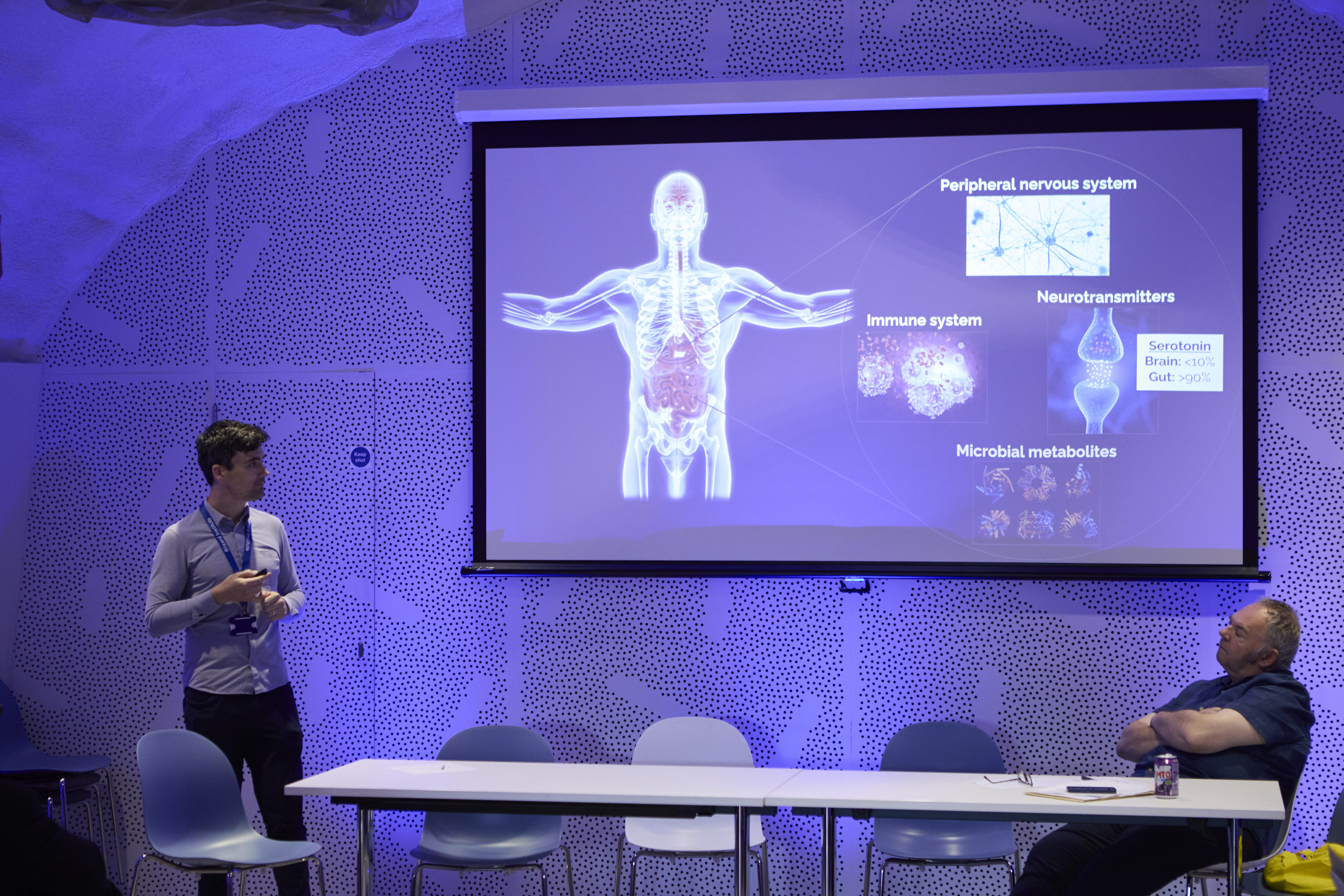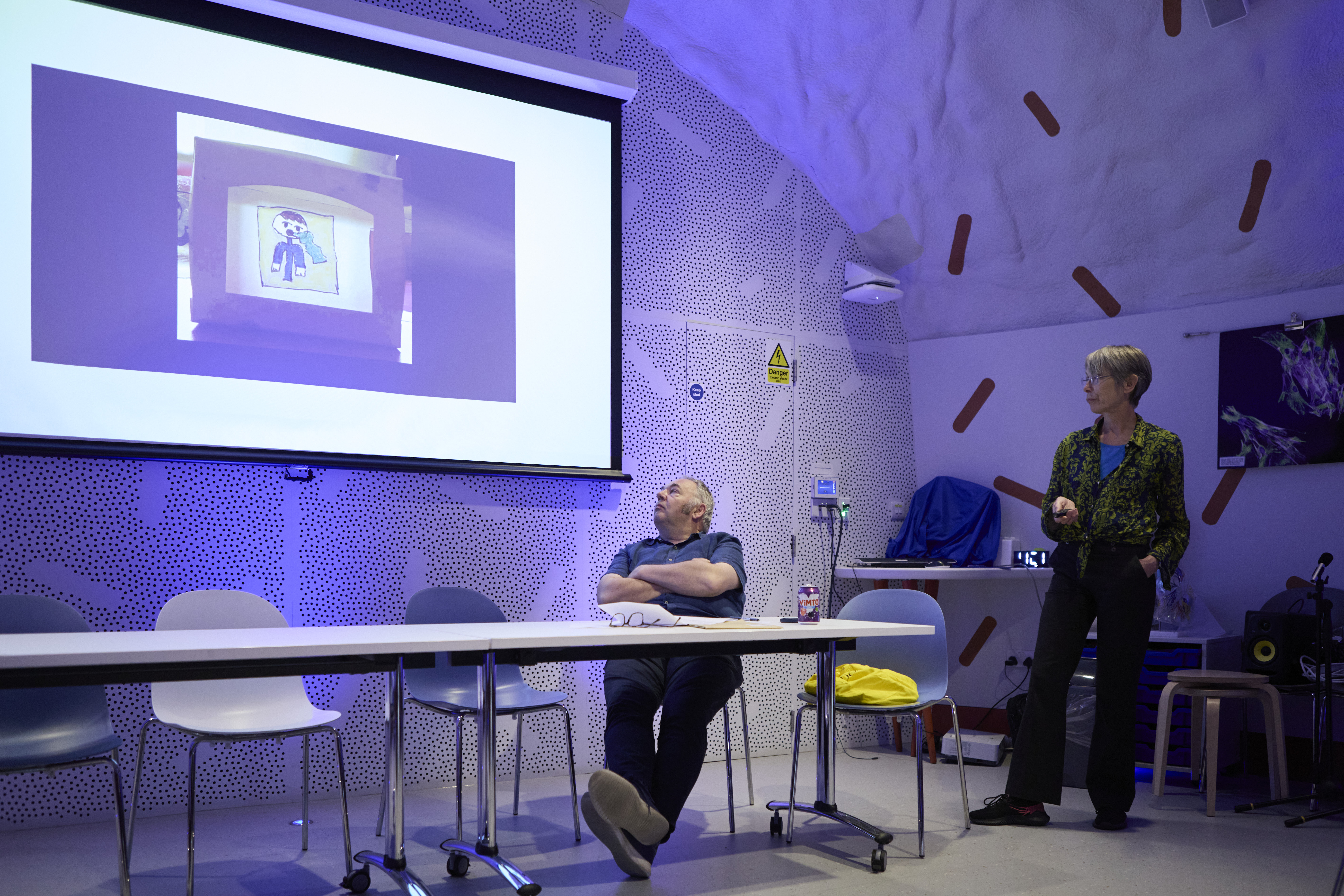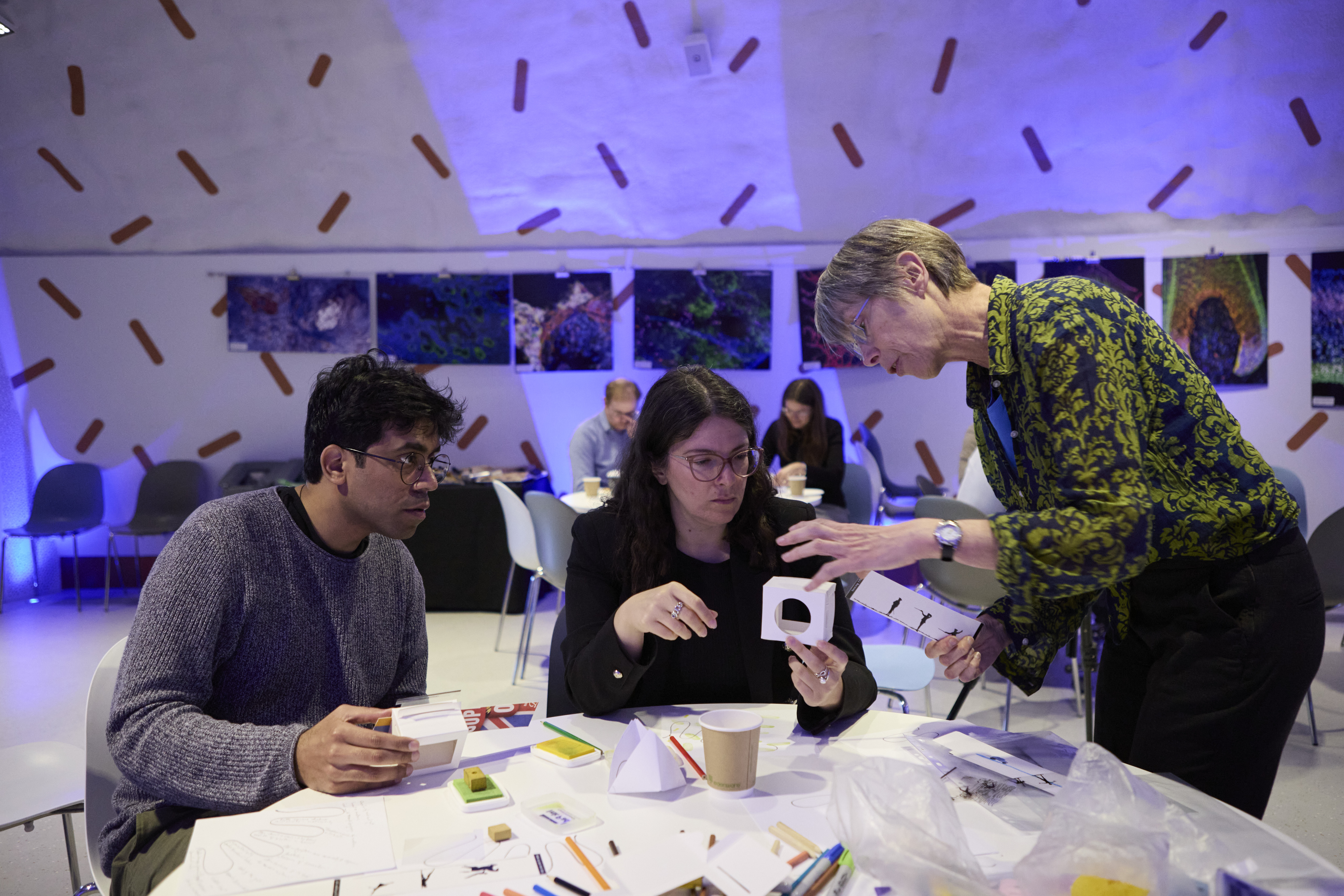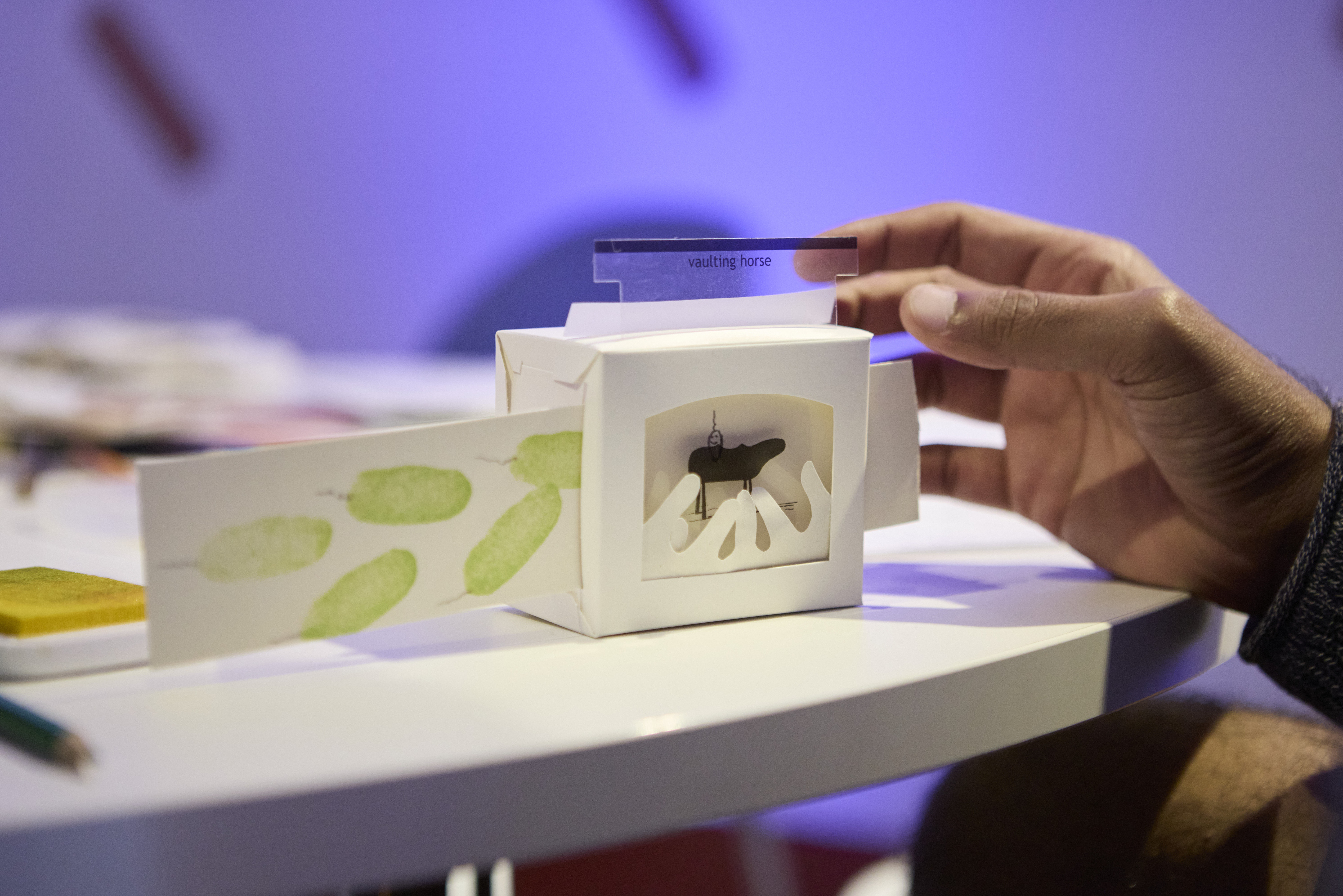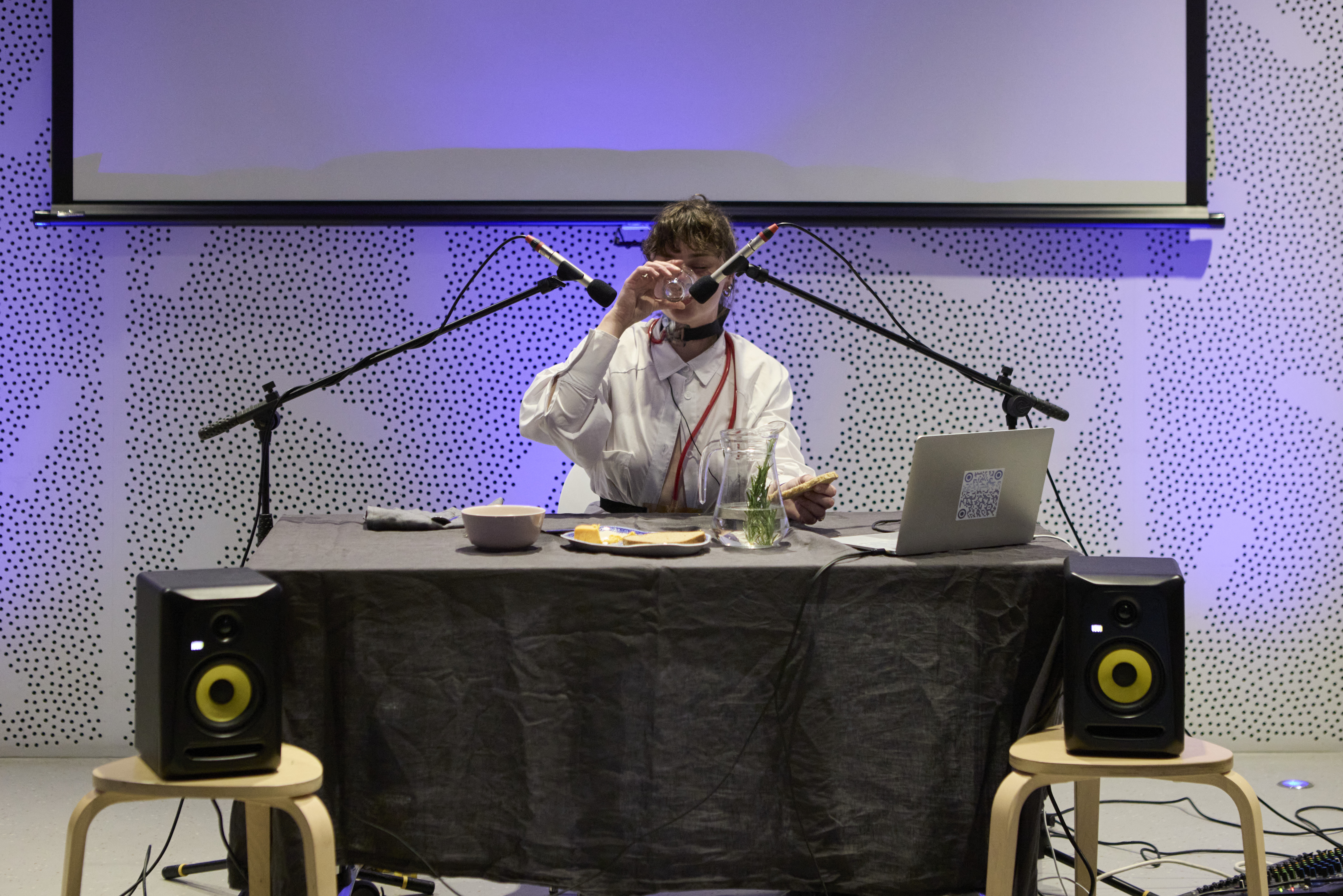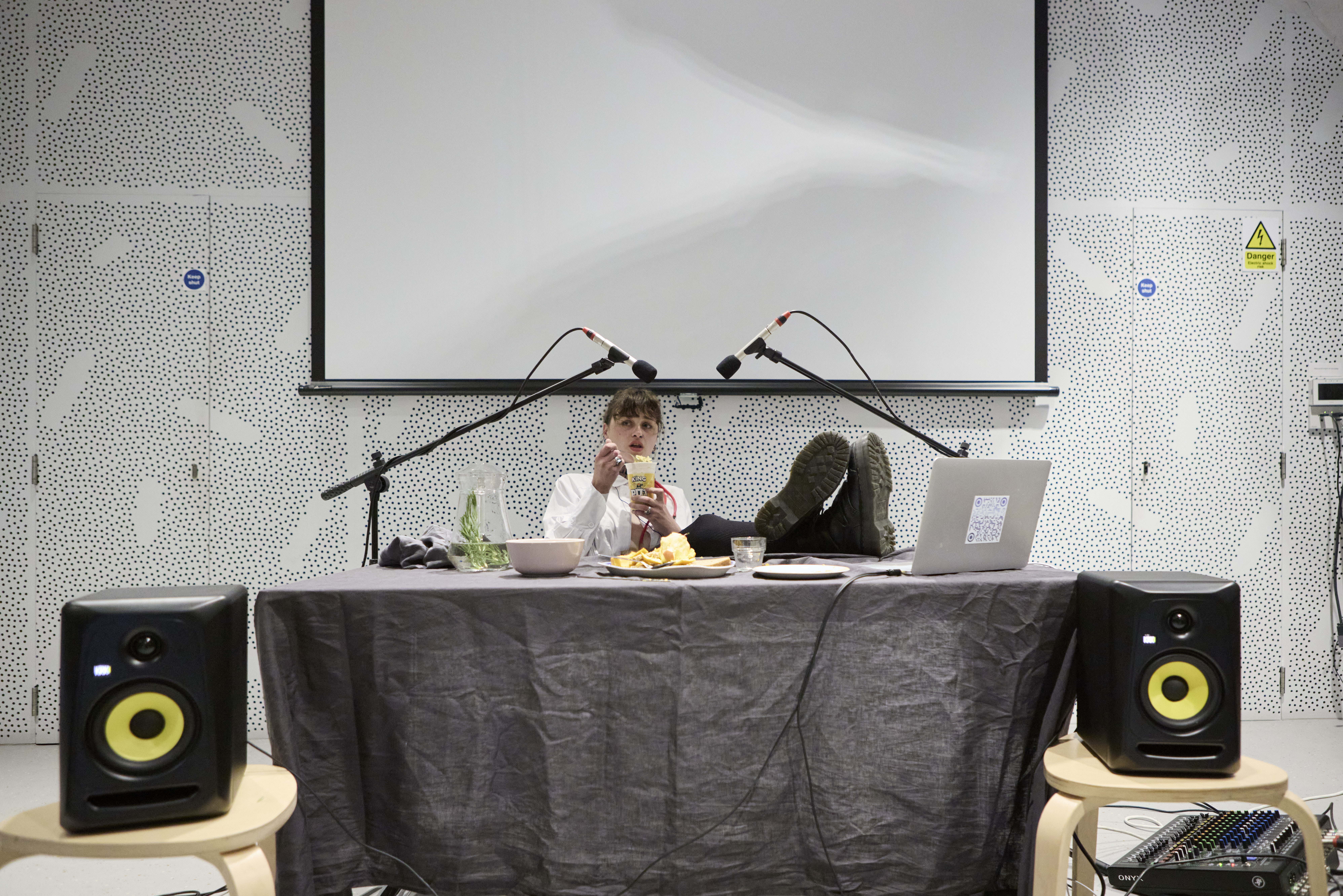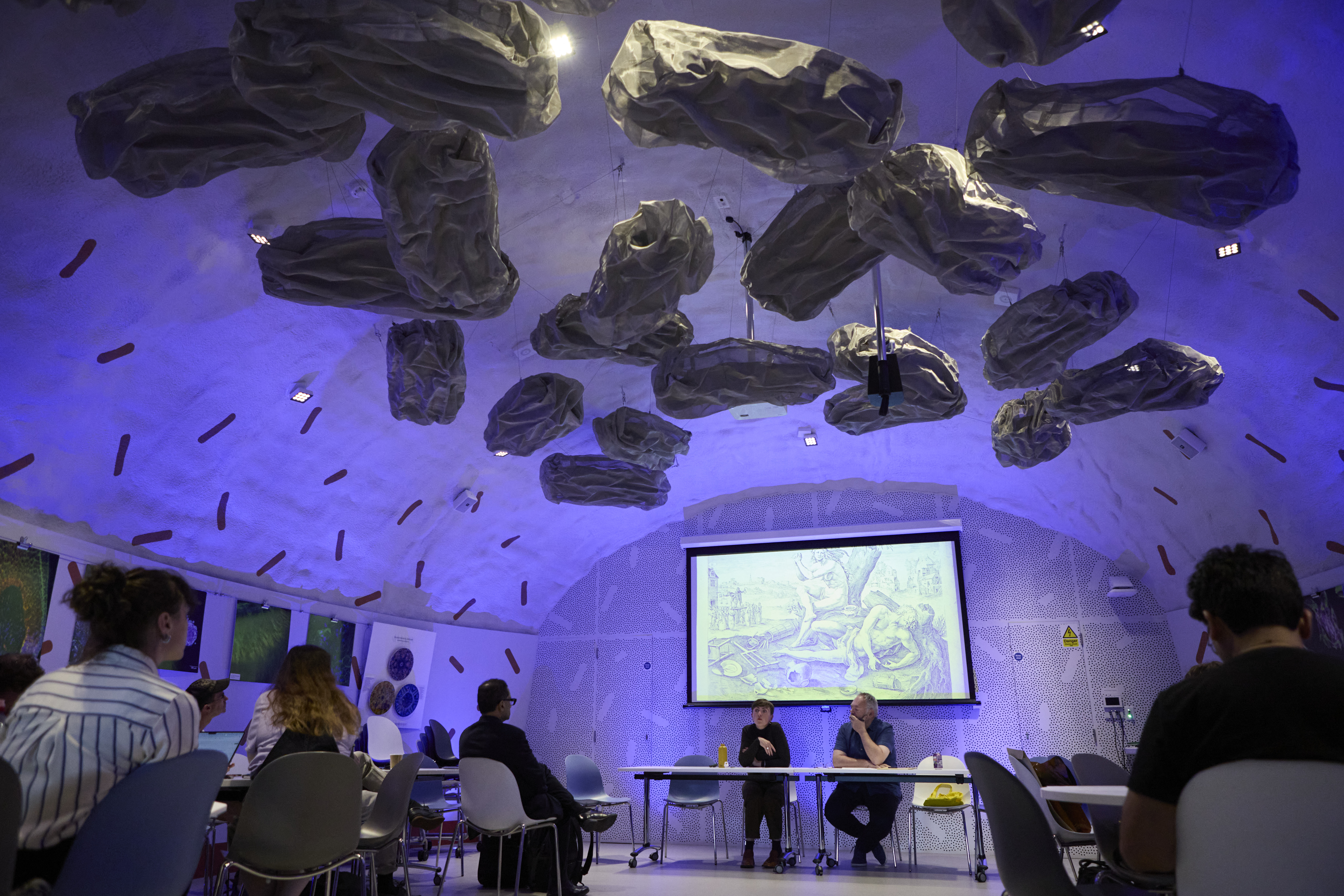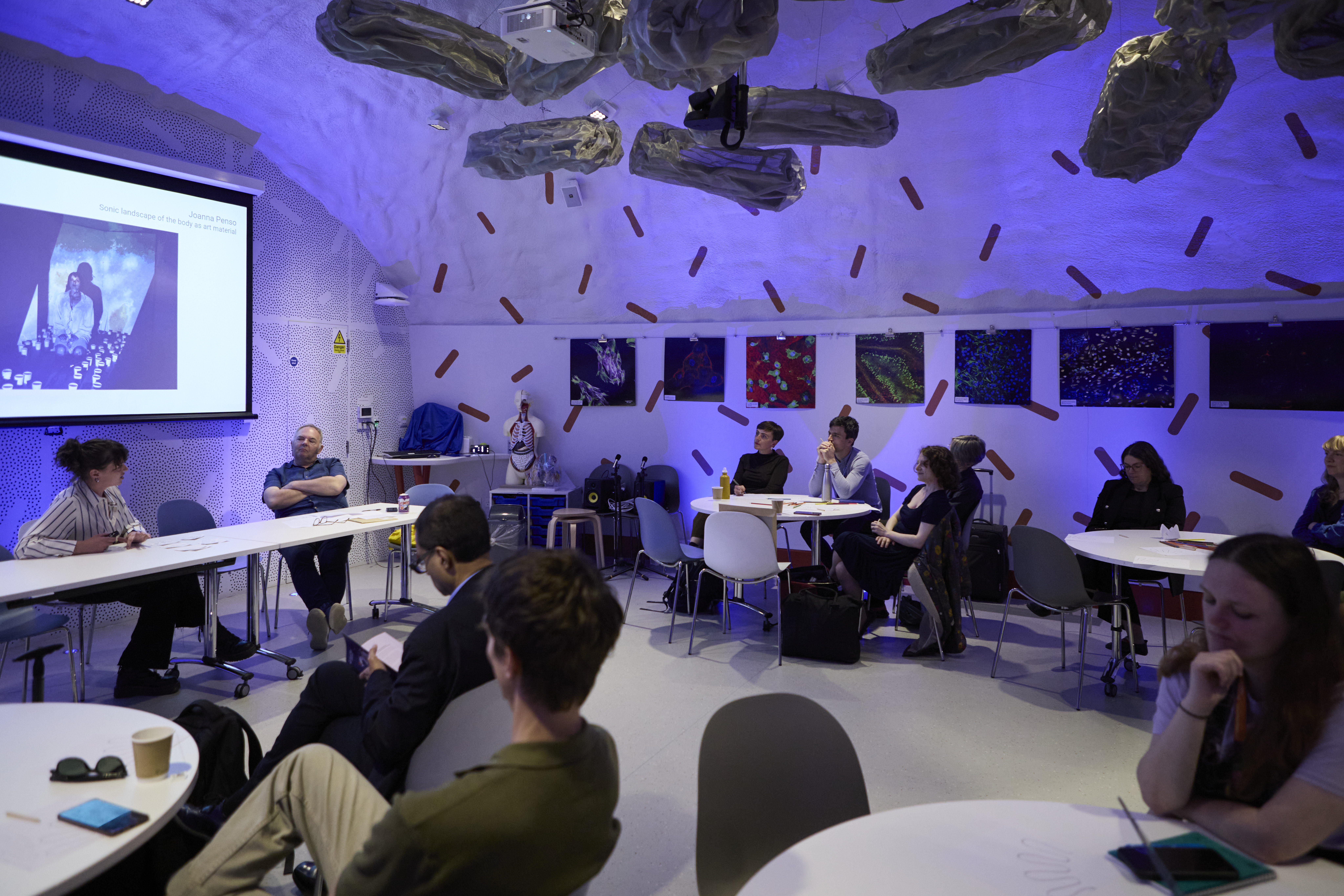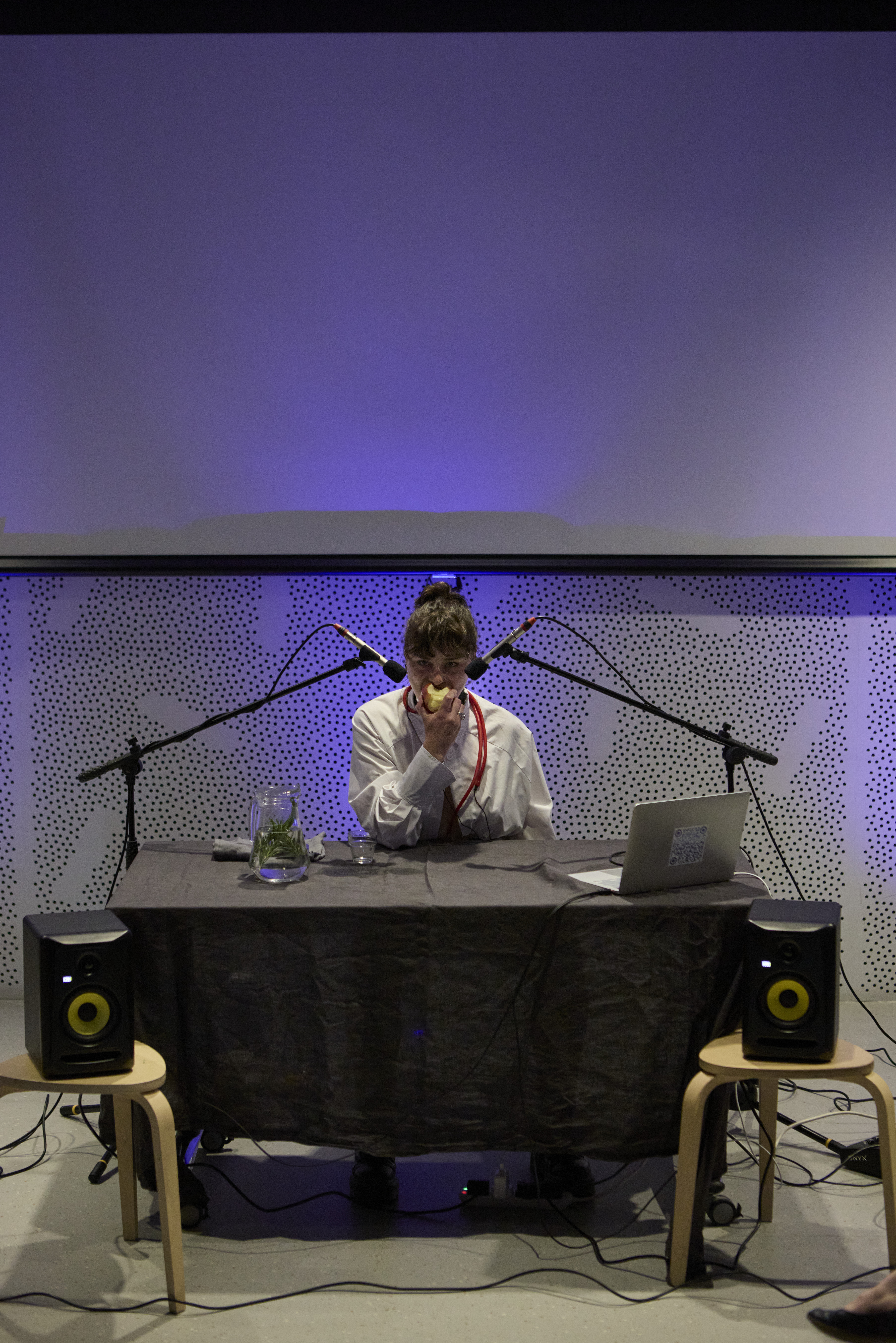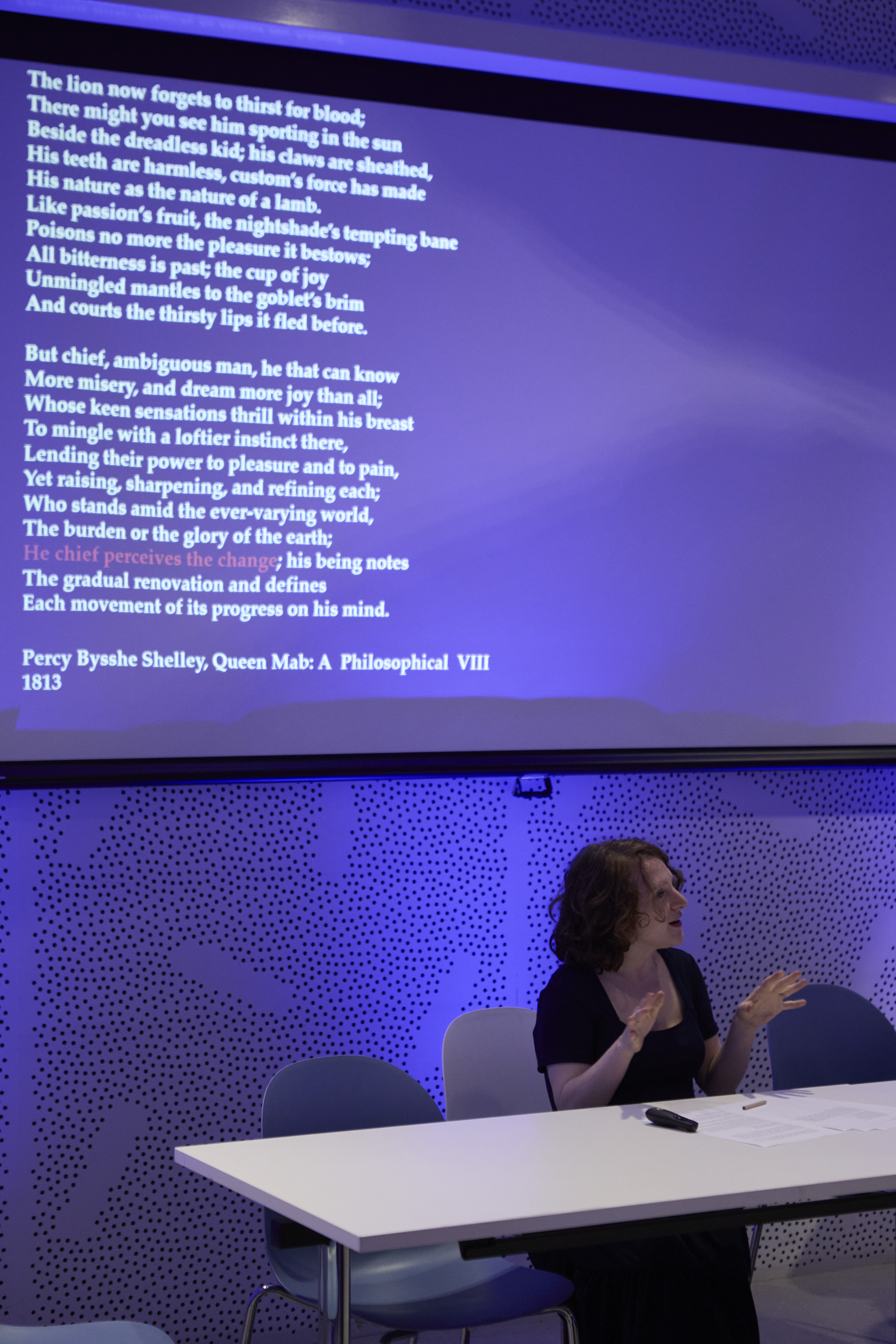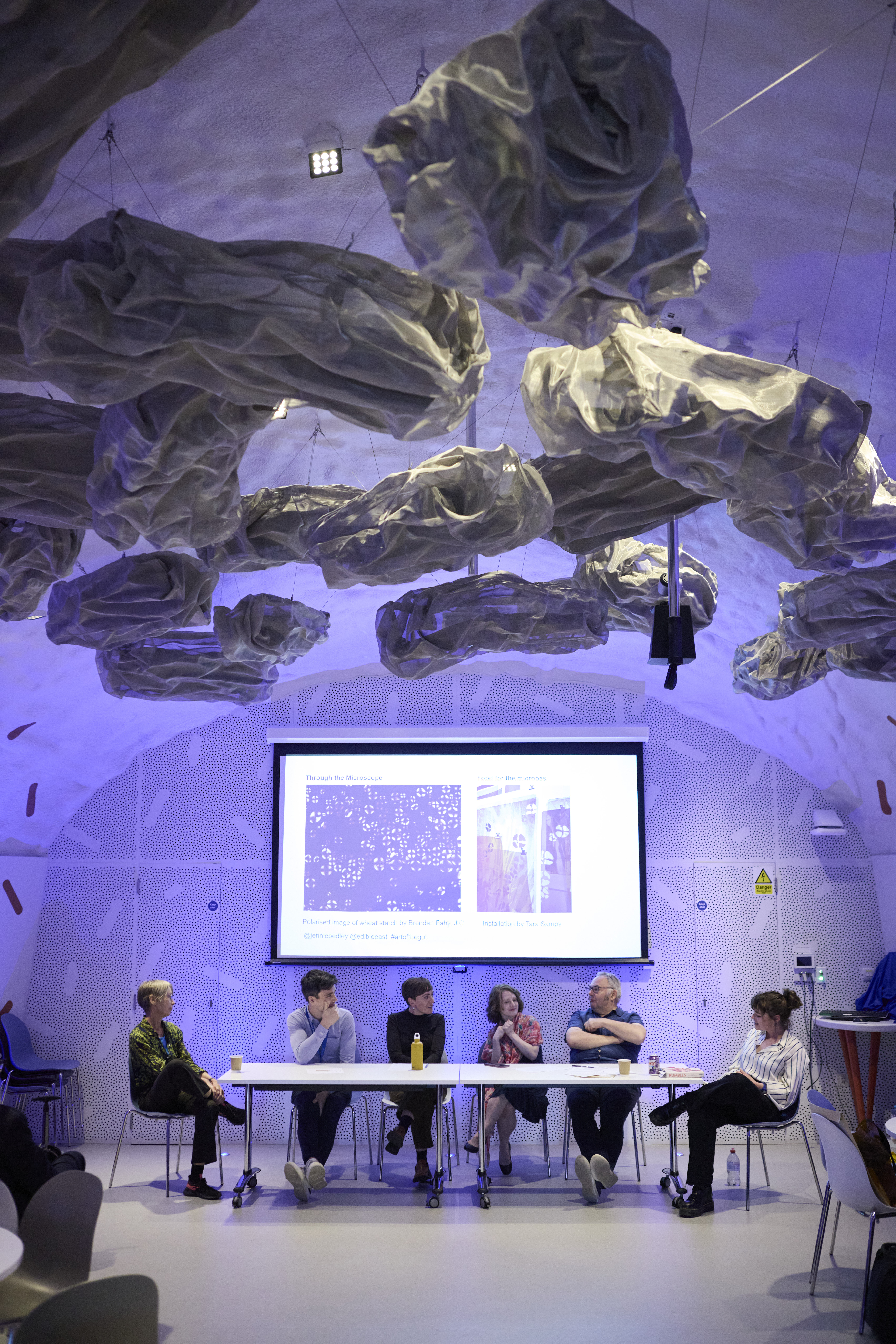Interdisciplinary Perspectives on Gut Health: Historical and Contemporary Insights
At the event which took place on 12 June 2025 and was organised by the Health Humanities Research Forum members, Dr Elsa Richardson and Dr Rhodri Hayward discussed Rumbles, Dr Richardson's vivid account of the stomach's grip on our bodies, behaviours, and beliefs. In a history that ranges from medieval alchemy to today's probiotic boom, Richardson argued that our guts shape who we are (Image 1).
Dr Rhuari Robertson, of the Centre for Immunobiology, spoke about the gut and the microbiome, sharing data from studies linking the gut to our emotions and mental health (Image 2).
Dr Merrilees Roberts, Literature Scholar, spoke about the Romantic poets and their vision of the gut as a seat of emotion and artistic experimentation (Image 11).
Visual artist Jennie Pedley facilitated a participatory drawing workshop based at her Art of the Gut residency at the Quadram Institute. Attendees drew, doodled and collaboratively constructed visual narratives tracing the journey of food through the digestive tract. Participants visually mapped dietary pathways and microbial communities in a tactile process aimed to stimulate thought about the gut as an emotional organ (Images 3, 4 and 5).
Sound artist Joanna Penso performed a solo version of her ‘Digestion Symphony’, where her own chewing and digestive sounds were amplified via contact microphones and synchronised to a metronome and ambient recordings of meal-time behaviour interspersed with moments of internal monologue. Calling this piece, her ‘rebellion’, Penso’s performance probed social discomfort at the abject aspects of eating and digestion (Images 6, 7, 9 and 10).
The evening wove together historical narratives from Elsa Richardson’s Rumbles, from Galenic theories to Victorian dietary norms, with live artistic practices that literally embody digestion. Seeing Joanna Penso physically perform her gut symphony added a visceral, sensorial layer that made the gut simultaneously intellectual and somatic, and Jennie Pedley’s interactive invitations to think about the gut as an emotional organ helped consolidate Richardson’s opening proposal that the gut is a deeply interdisciplinary organ.
The event created clear pathways for genuinely interdisciplinary research: artists collaborated on experiments testing how rhythm or tactile visualisation impacts microbiome markers, while historians helped shape grant‑funding proposals under frameworks like the UK Gut‑Immunology‑Brain Axis Network+, embedding cultural and embodied dimensions into scientific inquiry (Images 8 and 12).
To learn more about the Health Humanities Research Forum, please visit its webpage.
Photography by Alberto Romano (contact him via his website and Instagram).
